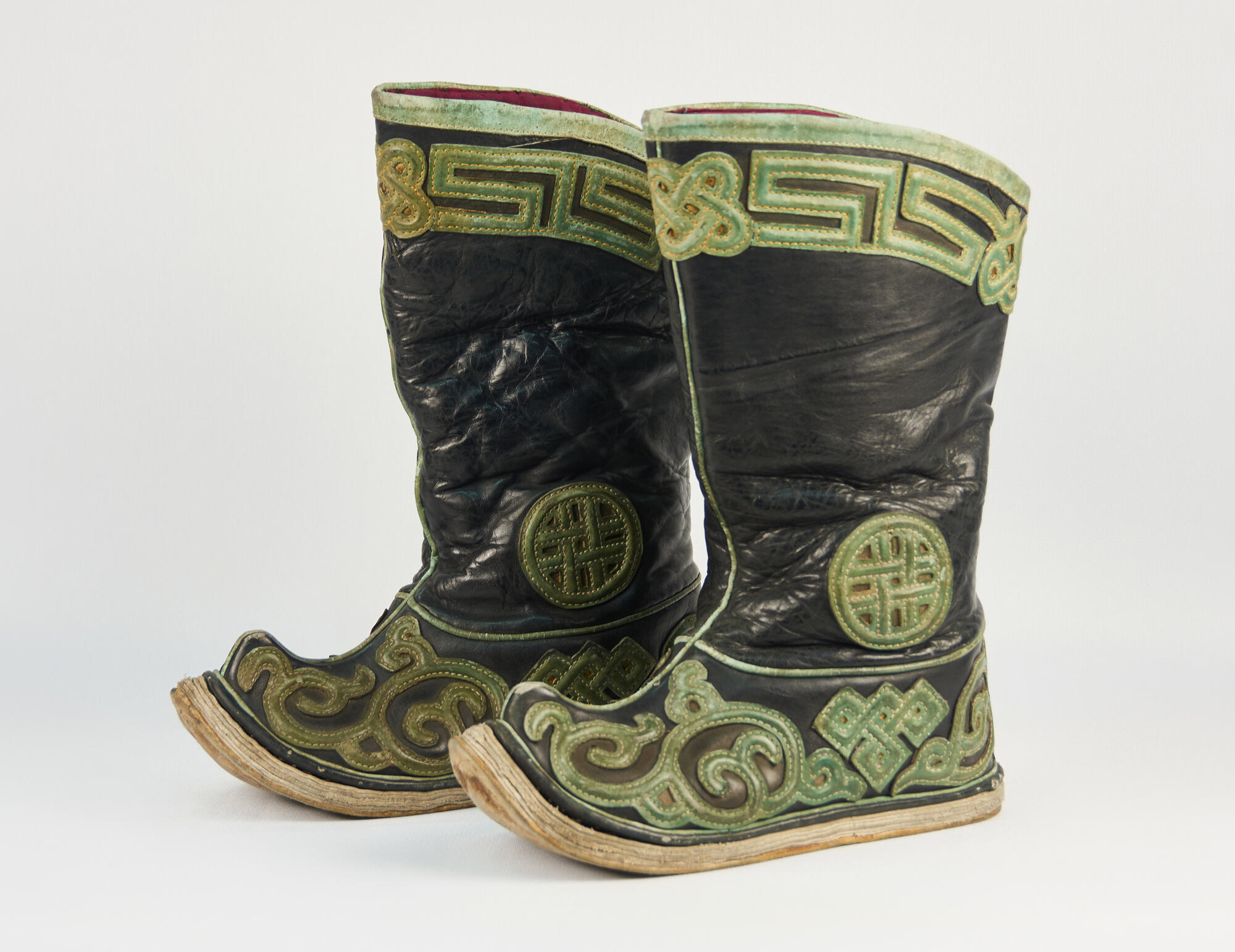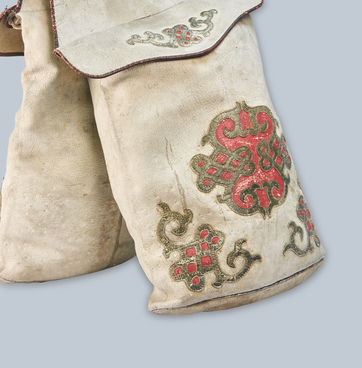There were two types of Tuvan leather footwear: hard-soled boots with a curved toe and soft leather ones in the form of a stocking. The difference was that the first type was boots made of well-dressed cowhide leather. The second kind of shoes had soft goatskin legs and cowhide soles. Сommon people wore soft shoes mainly as casual, while wealthy people used them as their home shoes.
The footwear of the rich differed not only in the thickness of the sole, but also in the fact that its vamps (a vamp is the upper part of the shoe) and legs were decorated with appliqués and patterns. Men’s shoes had signs on them, mostly Buddhist symbols that signified strength and power. The other most common sign was the “knot of happiness.” However, men’s shoes sometimes had no appliqués at all. Women’s shoes, on the other hand, were more ornate.
The leather of which the boots were made was of two colors: black and brown. Black shoes were usually worn by rich men. Black leather shoes were a symbol not only of wealth but also of power. In Tuvan folklore, for example, the main hero, a bogatyr, wore not only a hat made of black sable, black silk ton robe, but also black leather shoes.
Rich people had more than one pair of shoes. Vera Pavlovna Diakonova, a major researcher of the Turkic-speaking peoples of South Siberia, notes that by the time they got married, rich girls already “…had four pairs of hard-soled boots and four pairs of soft ones. Each pair had a special purpose (for sitting in the yurt, household chores outside the yurt, festive ones).”
Tuvan men’s, women’s and children’s shoes differed only in size, but not in cut. In addition, for practical reasons, shoes were not sewn specifically for the right and left feet — the boots were simply swapped places when they were worn out.
The main tools for making shoes were a knife, awls and needles of different sizes. Tendon threads were used for this purpose.
The museum displays leather women’s holiday boots (kadyg idik). They are footwear with a characteristic curved and pointed toe and a solid, multi-layered felted leather sole. The bootlegs are cut from two leather pieces tapering downward and lined with dense cotton fabric, which is sewn to the leather part with fine stitches. This is why the boots are meant to be worn only in warm seasons.





